The IAF began with US helicopters in the fifties and expanded gradually to include license-built French and Soviet helicopters. The circle is coming round once again with planned induction of the Chinook heavy-lift and the Apache attack helicopters, both of US origin. However, the Chetak/Cheetah family are tottering on their undercarriages due to their long service and vigorous use at the outer reaches of their performance envelopes in inhospitable terrain and merciless weather conditions. The heavy-lift Mi-26 and Mi-8 medium-lift helicopters are obsolete and need replacement. ‘Make in India’ and a new sense of purpose for modernisation of the Indian military, especially after the Chinese incursions and transgressions into India climaxed in the Doklam episode, thus present the opportunity to modernise the IAF’s helicopter fleet.
IAF gripes about complementary shortfalls in the transport and helicopter fleet, are relegated to lower audibility…
At the peak of the Doklam stand-off, the crescendo about deficiencies in India’s air power vis-a-vis a Sino-Indian military confrontation, the shrillest audible note alluded to sub-optimal and dwindling ‘squadron strength’ of the Indian Air Force (IAF). The figures being discussed in this context referred to the combat squadrons of the IAF, a statistic that Indian media and defence analysts are obsessed with. Consequently, IAF gripes about complementary shortfalls in the transport and helicopter fleet, are relegated to lower audibility although the near absence of an indigenous aerospace industry, exorbitant costs of imported high technology aircraft of all varieties and budgetary constraints have meant that these fleet are also adversely affected, possibly to an even graver level.
With India’s territorial expanse of over 3,000,000 sq km and land borders of 15,106 km with its seven land neighbours, two of whom are definitely inimical towards India, the current inventory of IAF helicopters is woefully inadequate. According to Flight Global’s publication World Air Forces 2017, the IAF has 432 helicopters while Indian publication Bharat Shakti puts the figure at around 374. The official IAF website says its helicopter fleet has over 500 helicopters but does not elaborate further. When compared to the over 300-helicopter strength of Air Methods, a US-based provider of Helicopter Emergency Medical Services (HEMS), the IAF strength gets lampooned pitiably, especially when viewed against the claim that the IAF is the fourth largest Air Force in the world.
Need For Modernisation
The IAF Doctrine’s exhortation is to be equally effective and credible during war and peace. While fixed-wing combat aircraft essentially train during peacetime for possible wartime employment, IAF helicopters spend a substantial proportion of their peacetime flying on operational missions by way of a large chunk on humanitarian aid in remote regions. Its wartime operational roles include attack, anti-tank, armed, Suppression of Enemy Air Defences (SEAD), communication, reconnaissance, Search and Rescue, Casualty Evacuation, Special Heli-borne Operations (SHBO), Special Operations, logistics support to the Indian Army and civil administration and air-to-air combat against helicopters as well as fixed-wing aircraft for which pilots flying helicopters in offensive roles in the Tactical Battle Area (TBA) are given training. However, a large chunk of their peacetime toils is as strenuous and vigorous as any mission in the proximity of an enemy. Thus, peacetime operations for the IAF’s helicopter fleet exact helicopter attrition and impose wear and tear on the machines much as wartime deployment would.
Delivery of the 15 Chinooks for which a contract was signed in September 2015, is expected to begin in March 2019 and completed in March 2020…
The IAF began with US helicopters in the fifties and expanded gradually to include license-built French and Soviet helicopters. It is coming to full circle with the planned induction of the Chinook heavy-lift and the Apache attack helicopters, both of US origin. However, the Chetak/ Cheetah family are tottering on their undercarriages due to their long service and vigorous use at the outer reaches of their performance envelopes in inhospitable terrain and merciless weather conditions. Indeed, in March 2015, a group of wives of Army officers had even petitioned the Defence Minister to stop the use of these “outdated” helicopters to avoid casualties. The heavy-lift Mi-26 and Mi-8 medium-lift helicopters are also obsolete and need replacement. ‘Make in India’ and a new sense of purpose for modernisation of the Indian military, especially after the Chinese incursions and transgressions into India climaxed in the Doklam episode, thus present the opportunity to modernise the IAF’s helicopter fleet.
Classification For Utility Roles
Civil aviation philosophy stipulates a Maximum All Up Weight (MAUW) of 3,175 kg as the magic figure above which civil helicopters must fly under more stringent regulations. In the US, FAR Part 29 rules apply to helicopters above 3,175 kg MAUW as compared to FAR Part 27 rules for lighter ones. For military helicopters, there is no universally acknowledged weight classification but by generally accepted convention, they are categorised into ‘heavy’, ‘medium’ and ‘light’ helicopters. Light helicopters are those under 5,543 kg MAUW and medium-lift ones are those with MAUW from about 12,000 lbs to 45,000 lbs (20,400 kg). Above this MAUW lies the realm of the heavy lift.
Heavy-Lift Helicopters
The Russian Mi-26 is in service with the IAF since 1986, but does not have a satisfactory maintenance record. In 2009, the Ministry of Defence (MoD) invited bids for a new heavy-lift helicopter and the Chinook CH-47 emerged the winner against the Mi-26 T2. In 2012, the MoD finally decided to order 15 Chinook CH-47 helicopters. The twin-rotor, Boeing-manufactured Chinook has a unique design incorporating powerful contra-rotating tandem rotors and is being operated by around 20 countries for heavy-lift assault, troop movement, logistics support, aerial battlefield recovery and Special Operations. Capable of being refuelled mid-air for extended range, the Chinook can carry 55 combat-ready troops or over 11,100 kg of cargo.
The Mi-26 was larger with a maximum take-off weight of 56,000 kg and a carriage capacity almost double that of a Chinook whose maximum gross weight is 22,668 kg. However, the Chinook can be transported in the hold of the C-17 Globemaster III; the advantage of being able to transport the Chinook over large (strategic) distances is obvious. By December 2015, the IAF realised that there was only one serviceable Mi-26 left and that too had only 100 hours left before major servicing which would take around six months.
IAF helicopters spend a substantial proportion of their peacetime flying on operational missions by way of a large chunk on humanitarian aid in remote regions…
Flying of the Mi-26 was restricted to only urgent operational tasks and discussion initiated with Russian Helicopters for overhauling three Mi-26 helicopters but nothing seems to have come out of those discussions. Meanwhile, delivery of the 15 Chinooks for which a contract was signed in September 2015 for Rs 8,048 crore, is expected to start in March 2019, and the last one is to be delivered in March 2020. Thus there is expected to be a period of several months during which the IAF may have none or at the most, one heavy-lift helicopter at its call. However, with the induction of the Chinook, the IAF would be in a cheery position as far as heavy-lift is concerned.
Medium-Lift Helicopters
Soviet/Russian origin helicopters have been the favoured medium-lift machines for the IAF. In the 1960s, India had bought the Mi-4, a light machine and then went on to buy 128 Mi-8s and 170 Mi-17s, both medium-lift machines. In 2000, India signed up for 40 Mi-17 1Vs and in 2008, for 80 Mi-17 V-5s; followed by three additional contracts in 2012-13 for 71 more of the latter. The helicopters are flown into India in ready-to-assemble kits and built up at the IAF depot in Chandigarh. In February last year, the last three of 151 Mi-17V5 helicopters contracted for $3 billion were delivered to the IAF.
Reportedly, another contract for 48 more of the same version is expected to fructify by end-2017. Rosoboronexport’s CEO Alexander Mikheev told the media at the Russian air show MAKS in July 2017 that, “We hope that we will reach an agreement before the end of this year.” This will bring the total number of Mi-17V5s to 199. The Mi-17 was designed based on the Mi-8 airframe. The helicopter retains the outstanding performance characteristics of its predecessors and can fly in tropical and maritime climates as well as in desert conditions.
While the Mi-8 was an 11 ton MAUW machine with a service ceiling of 14,765 ft, the Mi-17 has a MAUW of 13 tonne and a service ceiling of 19,690 ft. The Mi-17V-5 has a maximum speed of 250 kmph, and a standard range of 580 km, which can be extended to 1,065 km when fitted with two auxiliary fuel tanks. Designed to transport cargo inside the cabin and on an external sling, the Mi-17V5 is one of the world’s most advanced helicopters. It can also be deployed for troop and arms transport, fire support, convoy escort, patrol and Search-And-Rescue (SAR) missions. The standard portside door and ramp at the rear allow for the quick ingress and egress of troops and cargo. The helicopter can be fitted with an extended starboard sliding door, rappelling and parachute equipment, searchlight, FLIR system and emergency flotation system. It can transport either 36 armed soldiers internally or 4,500 kg of load on a sling. It is equipped with a new Full-Authority Digital Engine Control (FADEC) system. In short, moving ahead, the Mi-17 V5 is a modern, efficient and battle-worthy medium-lift helicopter for the IAF to have. It may be mentioned here that the Mi-17 family has been favoured by the IAF and the Indian Army for special operations due to its battle-worthy features.
The IAF had started inducting 62 Dhruv Advanced Light Helicopters (ALH) produced by HAL, but is unhappy due to its poor performance and unsuitability to the more critical roles of IAF. With a maximum AUW of 5.5 tonne, the Dhruv ALH lies just on the borderline between ‘light’ and ‘medium’. Dhruv ALH can carry 12 passengers besides the crew. Series production of Dhruv ALH started in 2001 and it has a twin-engine safety to offer in contrast to the Light Utility Helicopters in use by IAF all these years.
Light Helicopters
Since the induction of the Allouette family into the IAF in the 1960s French helicopters have been used in the light utility segment by the IAF. HAL began manufacturing the Chetak (Allouette III) helicopters in 1962 under license from M/s SUD-AVIATION, later Eurocopter and now Airbus Helicopters. The first Chetak in a ‘fly-away’ condition was delivered in 1965. This was followed by Cheetah (Allouette II). The Chetak has an MAUW of 2.2 tonne and the Cheetah just 1.95 tonne. While the Cheetah can carry three passengers, the Chetak can carry five in addition to a two-man crew. Both types were flown extensively by the IAF as well as the Indian Army and the Indian Navy.
The fleet of Chetak and the Cheetah helicopters have been rather difficult to maintain since the original production lines were wound up in 1980s…
However, the Chetak and the Cheetah have been rather difficult to maintain since the original production lines were wound up in 1980s. HAL has been license-producing these types as well as carrying out their major maintenance tasks. The Cheetal (Cheetah with a Shakti aero-engine) was introduced to augment the Cheetah fleet for Operation Meghdoot. Its better load-carrying capability and reliability have encouraged the IAF to order a small number, reportedly 20, for its fleet.
The Chetak/Cheetah fleet was to be replaced by 197 light helicopters to be purchased from international vendor/s. Of these, 64 were to come to the IAF. The Request for Proposal (RFP) was first floated in 2008, and again in 2009, as the Reconnaissance and Surveillance Helicopter (RSH). Eurocopter AS 550 C3 Fennec emerged the winner each time. Each time the tendering process came under scrutiny on account of allegations of misdemeanor and was cancelled. The government then began to explore options for a direct deal with Russia for the manufacture of the Ka-226T in collaboration with HAL under the ‘Make in India’ programme.
The Ka-226T is a light, twin-engine, multi-role, utility helicopter offered by Russian Helicopters with a coaxial, contra-rotating main rotor design which permits compact dimensions. It has a MAUW of 3.6 tonne with internal load and 3.8 tonne with under-slung load and can carry seven passengers or up to 1.05 tonne of cargo in cabin or 1.1 tonne under-slung. The helicopter can fly at a maximum speed of 250 kmph and cruise speed of 220 kmph. It has a maximum flight range of 600 km with main fuel tanks. The operational and hover Out of Ground Effect (OGE) ceilings of the helicopter are 6.1 km and 4.6 km respectively. The Ka-226T model is fitted with updated navigation and automatic control equipment, as well as an interchangeable mission pod, which allows for flexible equipment configurations.
The Ka-226T deal is a much-needed step towards modernisation of the IAF Light Utility Helicopter fleet…
The Ka-226T’s MAUW locates it between the Chetak/Cheetah and the Dhruv and slightly above the LUH that HAL is developing. However, the advantage it holds over the Chetak/Cheetah and the LUH is its twin engine design which is significant from the point of view of survivability in hostile terrain. Its cruise speed of 250 kmph is higher than the Chetak’s which is 185 kmph and its range is 600 km, which is higher than the Chetak’s 500 km. Its fuselage length is just 8.1 metres as compared to the much lighter Chetak which is 10.03 metre long due to the tail boom required to accommodate the tail rotor – a design feature not required in an axial rotor design. The coaxial main rotor system and absence of a tail rotor not only makes it safer on the ground and in the air, but also makes it possible to use the Ka-226T in spaces with scant room for manoeuvre, as the fuselage does not extend beyond the area swept by the rotors. Additional safety is afforded by the rear opening door whose use is uninhibited due to the absence of a tail rotor.
The RSH acquisition process was set into motion by a government-to-government agreement in December 2015 followed by HAL and Russian Helicopters agreeing in October 2016, to form a JV with HAL holding 51 per cent share. According to the contract, the first 60 helicopters will be shipped to India in fly-away condition, whereas 40 additional helicopters will be delivered as kits to India, where they would be assembled at a new HAL facility to be built in the city of Tumakuru for which Prime Minister Modi had laid the foundation stone early last year. Its production capacity will be 75 helicopters a year. The first batch of ten Ka-226Ts is expected to be inducted by the end of 2017. Significantly, the French connection is retained in the Ka-226T deal as the helicopter is powered by two Turbomeca Arrius 2G1 engines.
The Ka-226T deal is a much-needed step towards modernisation of the IAF Light Utility Helicopter fleet although there is some apprehension on account of the fact that the Ka-226T has not been tried and tested over prolonged operations in a Siachin-like environment. Meanwhile, HAL is developing the Light Utility Helicopter (LUH) which is a single engine design in the three-tonne AUW class with a glass cockpit and capable of flying at 220 kmph with a service ceiling of 6.5 km and a range of 350 km with 500 kg payload. HAL’s intent behind this design was to replace the Chetak/ Cheetah fleet with all the four user services. Its design and AUW characteristics are closer to the Chetak/Cheetah family as compared to the Dhruv which is a heavier machine.
The IAF helicopter fleet modernisation is in slow and steady progress.…
Helicopters For Offensive Roles
The only helicopter for an offensive role in the IAF was the Chetak in an Anti Tank Guided Missile (ATGM) role with a French AS 11 wire-guided missile until the Russian Mi-25 was inducted in 1983. The Mi 35, an upgraded version, followed in 1990. In a selection process for the replacement of the ageing Mi-25/35 fleet, Boeing’s AH-64E Apache met all Air Staff Requirements. 22 Apaches were finally ordered after considerable delay, in September 2015 at a cost of Rs 13,951 crore. The Apache is a twin-engine, tandem cockpit, two-man crew machine with a nose-mounted sensor suite for target acquisition and night vision systems. It is armed with a 30 mm M230 chain gun and four hard points mounted on stub-wing pylons, typically carrying a mixture of AGM-114 Hellfire missiles and Hydra 70 rocket pods. It is possibly one of the best attack helicopters in the world. The deliveries of the helicopters are expected to begin in July 2019 and completed by March 2020. However, with a decision having been taken about all future attack helicopters being allocated to the Army, the deployment of just 22 Apaches by the IAF, is of limited value. The procurement of six Apache attack helicopters has been cleared by the government.
For the offensive role, the IAF also has the Mi-17V armed with Shturm-V missiles, S-8 rockets, a 23mm machine gun, PKT machine guns and AKM sub-machine guns. It features eight firing posts for aiming the weapons and its onboard armament allows it to engage enemy personnel, armoured vehicles, land-based targets, fortified posts and other fixed and moving targets. The cockpit and vital components of the helicopter are protected by armoured plates while the aft machine gun position is also fitted with armoured plates to protect the gunner. The helicopter incorporates engine-exhaust Infra-Red (IR) suppressors, a flares dispenser and a jammer and is thus a veritable machine for offensive roles.
Growth in the economy in the coming years may permit quickening of the modernisation pace…
Indigenous options for offensive roles are the Rudra and the Light Combat Helicopter (LCH), both from the HAL. The Rudra is the weaponised version of the Dhruv ALH mentioned earlier; it joined service in 2013, and HAL official website projects a final product with a turret gun, rockets, Air-to-Air Missiles, Air-to-Ground Missiles, a Helmet Pointing System, a Data Link, an Infra Red Jammer and an Obstacle Avoidance System. The IAF has ordered 16 and, as the lead agency for integrating air-to-air missiles, is negotiating for the Mistral missile with French missile OEM MBDA. The LCH is being developed by HAL to meet the IAF’s requirement of a dedicated light helicopter for combat operations. It has a narrow fuselage in tandem cockpit configuration and reasonable stealth features, armour protection, night attack capability and crash-worthy landing gear for better survivability. It is also expected to have an Integrated Avionics and Display System (IADS), an IR Suppressor, a 20mm gun, as well as hard points for missiles and rockets. The IAF is expected to get 65. Both these types would add firepower to the IAF’s helicopter fleet but, in terms of payload and performance, will remain far short of the Apache which is inarguably the most lethal attack helicopter in the world today.
Conclusion
Soviet/Russian helicopters (Mi-4, Mi-8, Mi-17 family, Mi-25/35, Mi-26) have made up the majority of IAF helicopter holdings since the 1960s and Kamov Ka-226T is on its way to join its ranks soon. However, the political reality of improving US-India relations is evident in the decision to induct the Apache and the Chinook helicopters at an expected cost of $2.5 to $3 billion. These inductions are expected to be complete by 2020 and will provide adequate and qualitative boost in heavy-lift capability but only a consoling attack capability to be supplemented by as yet unproven Rudra and LCH.
The political reality of improving US-India relations is evident in the decision to induct the Apache and the Chinook helicopters at an expected cost of $2.5 to $3 billion…
In the medium-lift segment, the IAF has satisfactory number of platforms (Mi-17 V5s) though not in adequate numbers. Hopefully, in the future, older versions of Mi-8s and Mi-17s will get replaced by Mi-17 V5s or even more advanced versions. The Ka-226T, yet to be used extensively in India’s harsh environments, is an acquisition to watch. Should it fail to meet the light utility requirements satisfactorily in terms of payload, performance and reliability, it would be a rude shock for India as the investment in infrastructure would be an irreversible step.
To summarise, the IAF helicopter fleet modernisation is in slow and steady progress. Growth in the economy in the coming years may permit quickening of the modernisation pace and bring the strength up to a level commensurate with the fourth largest position the IAF holds amongst the air forces of the world.




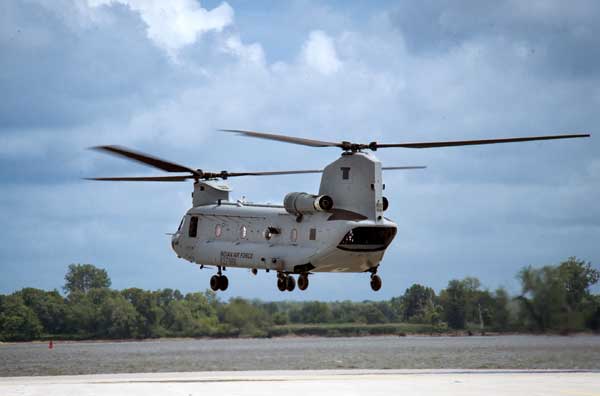
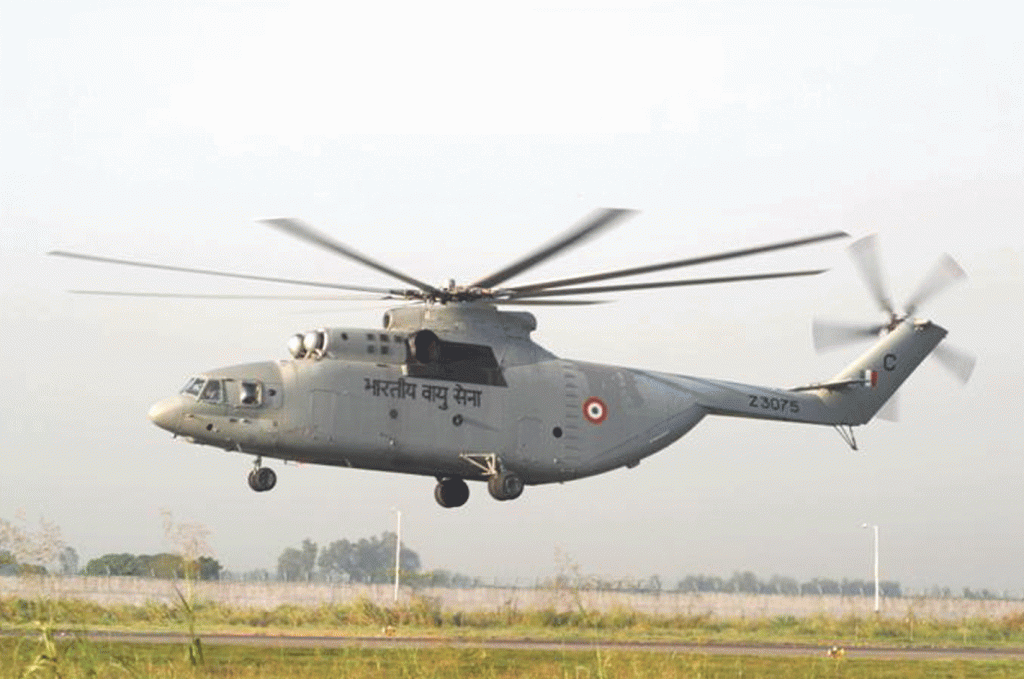
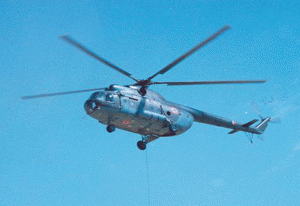
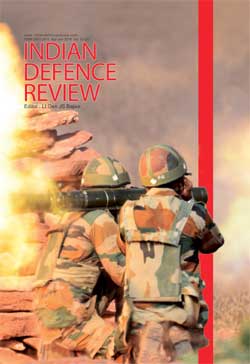
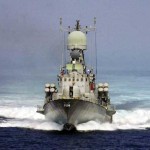
Well articulated presentation of the current situation and the predicament of the IAF. The fact that the Indian Armed forces are managing the variety of tasks with vintage helicopters speaks volumes of the capabilities and competency of the Armed Forces Pilots and Engineers.
Gp Capt could you explain the penchant of the Air Force to acquire Attack Helicopters. It is only in India where this unsatisfactory arrangement exists and has been the delaying factor in the acquisition of these machines.Attack helicopters fly within the zone of the Tactical Battle Area (TBA). The machines will be co operating with and supporting the ground forces closely in flexible and fluid battle conditions. This requires that the pilots are very familiar with the ground forces method of operations and be tactically sound in all operations of war of the Army. Sad to say
the Air Force pilots are not trained in these aspects and nor does the Air Force have the inclination to train the pilots as such. It is best left to the Army whose officers will fly these machines and will also be trained in all ops of war as is required by all Officers in the Army irrespective which Arm they belong to. Since the Air forces carries more favour with the babus of the MOD they have incessantly driven to keep these machines with the Air Force. If good sense prevails all attack helicopters should be transferred to the Army keeping organisational egos aside.